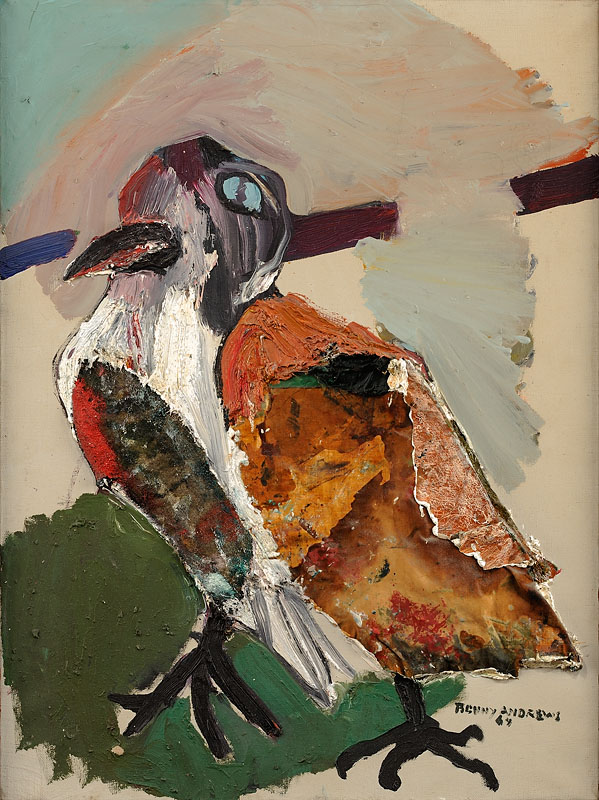Benny Andrews (1930-2006)
Benny Andrews was born into a family of ten on November 13, 1930 in small community called Plainview, Georgia. His mother Viola was very strict on her beliefs, and constantly promoted education, religion and most importantly, freedom of expression. George, Andrew’s father, also taught the same beliefs to his children. George, internationally known as the "Dot Man," was a self-taught artist, and produced many illustrative drawings that influenced Andrews.
Although the importance of education was stressed, Andrews’s number of absences accumulated due to the days he was needed on the field. Andrews graduated in 1948,from Burney Street High School in Madison, making him the first in his family to graduate high school. Andrews attended Fort Valley College on a two-year scholarship. There was only one art program offered at the institution, due to poor grades and the end of his scholarship Andrews left and joined the U.S. Air force in 1950.
Afterwards, the G.I. Bill of Rights afforded him training at the School of the Art Institute of Chicago where he received his BFA. His first New York solo show was in 1962. From 1968 to 1997, Andrews taught at Queens College, City University of New York and created a prison arts program that became a model for the nation.
After graduating from the Art Institute of Chicago he received the John Hay Whitney Fellowship for 1965-1966 and a CAPS award from the New York State Council on the arts in 1971[1] the same the same year he created the painting No More Games, a noted work which is about the plight of black artists and an iconic reflection of his emerging social justice work in the art world.[2]
In 1969, Andrews co-founded the Black Emergency Cultural Coalition (BECC) an organization that protested the 'Harlem on my Mind' exhibit at the Metropolitan Museum of Art in New York. They protested the fact that no African-Americans were involved in organizing the show and it contained no art only photo reproductions and copies of newspaper articles about Harlem.. The BECC then persuaded the Whitney museum to launch a similar exhibition of African American Artists, but later boycotted that show as well for similar reasons.[3] In 2006, he traveled to the Gulf Coast to work on an art project with children displaced by Hurricane Katrina.[4]
He was the director of visual arts for the National Endowment for the Arts from 1982 to 1984.
Benny Andrews was a figural painter in the expressionist style who painted a diverse range of themes of suffering and injustice, including The Holocaust, Native American forced migrations, and most recently, Hurricane Katrina. He began his own style of painting in the 1960s that developed parallel to the flourishing collage moment.[1] Other influences on his work include Surrealism and Southern folk art. His work hangs in the Metropolitan Museum of Art and the Art Institute of Chicago, the Studio Museum in Harlem, New York City, the High Museum of Art in Atlanta, Georgia, the Hirshhorn Museum in Washington, DC, and the Ogden Museum of Southern Art in New Orleans, Louisiana.
Reflecting his minimalist style, Andrews was known to say that he was not interested in how much he could paint but how little. He incorporated his sparing use of geometrical forms to convey broader messages about the people and places he depicted. Gabriel Tenabe describes his drawing as "delicate, subtle, and intimate... draw(ing) from his past private life in Georgia and his social life in New York." Christian imagery is juxtaposed with sensibilities of humanism calling out false religion, false democracy, sexism and militarism that have birthed a failed society.[1]
Link to full bio: https://en.wikipedia.org/wiki/Benny_Andrews

The Bird
Oil on board
26x19 inches
1964
Signed and dated
Photo credit: John Wilson White Studio

Black Power
Pencil on paper
18x12 inches
1971
Signed and dated
Photo credit: John Wilson White Studio